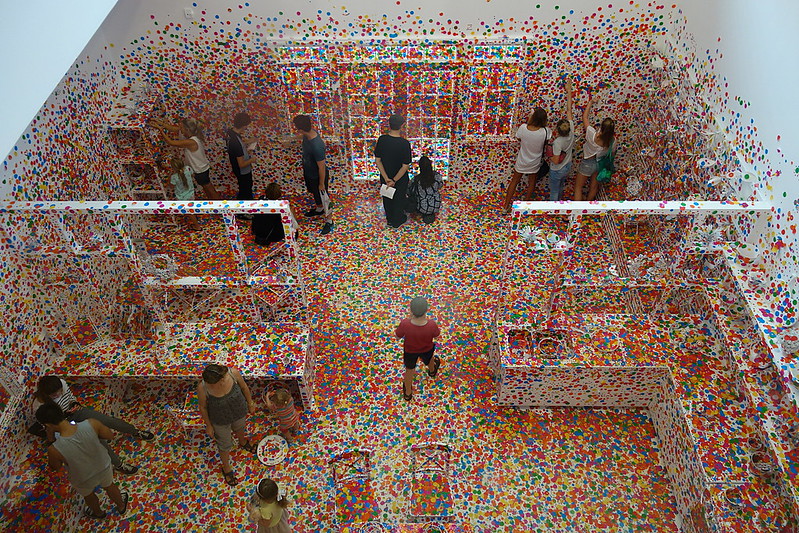

The camera also has a special connection to Dr. So I thought it the perfect coda to the Voigtlander’s time as our minister of color memories that it be slowly “obliterated” by the dots of bright, vibrant, beautiful color in Kusama’s stunning exhibition. But when it did we knew there was a special evening in store for us.Īfter dinner and after dark, Dad would set up the screen and the projector, which was an old single-slot, one-slide-at-a-time affair - no carousel fanciness in our house! Mom brought the popcorn in, and the lights went down, and one by one we would see the events of the previous weeks or even months show up in glorious color right before our eyes. It took forever to finish a roll, and when it was finally sent off to Kodak for processing, it seemed to take an eternity to appear in the mailbox. Dad was very precise with it and his light meter, and those Kodachromes were like magic to us. It had a pair of doors in the front that opened to pop the lens out and extend it on locking struts, and a tall plunger to advance the film to the next frame. One camera was very special: my father’s Voigtlander German camera that he used for all the Kodachromes he took of his wife and family of six kids during the ’50s and ’60s. I donated four cameras to the exhibition, along with a sculpted cake stand and cover that was formed and painted to look like a Cassata Cake as well as a votive candle holder in the form of an aluminum stag, with six votive candle cups on the tips of its antlers. Picture Perfect Howard Agriesti, chief photographer, Cleveland Museum of Art Installation view of The Obliteration Room, Yayoi Kusama. Howard Agriesti, chief photographer, Cleveland Museum of Art. And as the spots grew, you could imagine it as a globe again for some alien planet where every country, lake, and mountain is a bright colored dot. After the first couple of days, it resembled a giant candy jawbreaker with multicolored spots. When it was first painted as an all-white sphere, it looked like a very round egg. Now as part of The Obliteration Room, it’s been fun to watch it change.

It had served its purpose in my house and really needed a fresh coat of paint. When the call for donations to Kusama’s Obliteration Room went out, our globe seemed like a natural choice. By no fault of its own, it was rather ugly. The globe looked like a smog-covered earth. It once had a lamp inside, but that was burnt out. Over time, because of smoke and age, the globe developed a yellow-orange-brown color and at a distance resembled Mars. And I used it to take my children on a couple tours through the 20th century to explain how national borders had changed and why.Īt least one of its owners was a smoker.

The globe could have been a good conversation piece to keep around on top of the piano. It was made sometime in the late 1940s or ’50s and included a lot of out-of-date political boundaries: the USSR, East and West Germany, British Rhodesia, and French Indochina.

The globe I donated to The Obliteration Room was well used before it arrived in our house. Image courtesy Cleveland Museum of Art.Īlien Planet Jim Engelmann, exhibition designer, Cleveland Museum of Art Jim Engelmann, exhibition designer, Cleveland Museum of Art.


 0 kommentar(er)
0 kommentar(er)
